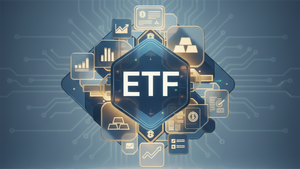
The financial world recently witnessed a pivotal event in the cryptocurrency landscape: the latest Bitcoin halving. This pre-programmed mechanism, fundamental to Bitcoin's (BTC) design, once again slashed the reward for mining new blocks by half, effectively reducing the rate at which new bitcoins enter circulation. This event is not merely a technical adjustment; it's a profound reinforcement of Bitcoin's scarcity economics, drawing comparisons to traditional safe-haven assets like gold and setting the stage for significant long-term implications for its value proposition and market perception.
The halving serves as a powerful reminder of Bitcoin's deflationary model, a stark contrast to the inflationary tendencies of fiat currencies. By systematically constricting supply, the protocol engineers a unique form of digital scarcity designed to bolster its appeal as a store of value. As the market grapples with a reduced inflow of new BTC, investors and analysts are closely watching for shifts in demand dynamics, potential price movements, and the broader impact on the cryptocurrency ecosystem, all while looking ahead to how future halvings will continue to shape this burgeoning asset class.
The Inevitable Supply Shock: A Closer Look at Bitcoin's Halving
The Bitcoin halving is an event hard-coded into its protocol, designed by its pseudonymous creator, Satoshi Nakamoto, to occur approximately every four years, specifically after every 210,000 blocks are mined. The most recent halving, which took place in April 2024, saw the block reward for miners cut from 6.25 BTC to 3.125 BTC. This event marks the fourth such halving in Bitcoin's history, following previous reductions in 2012, 2016, and 2020. This programmed reduction in new supply will continue until roughly 2140, when the maximum supply of 21 million bitcoins will have been mined, with miners then relying solely on transaction fees for compensation.
This deliberate mechanism is critical to Bitcoin's economic model, establishing a predictable and diminishing supply schedule that underpins its value proposition as a scarce digital asset. Unlike fiat currencies, which can be printed at will by central banks, Bitcoin's issuance rate is transparent and immutable. The immediate aftermath of a halving is a "supply shock," where the daily issuance of new bitcoins is abruptly cut. While immediate price surges are not guaranteed, historical data suggests that significant price appreciation often follows halving events with a delay of several months, as the reduced supply gradually impacts market dynamics.
Key players in this event include the Bitcoin mining community, who are directly affected by the reduction in block rewards, and institutional investors who have increasingly entered the Bitcoin market, particularly since the approval of spot Bitcoin Exchange Traded Funds (ETFs) in the United States. Initial market reactions to the 2024 halving were somewhat muted compared to previous cycles, largely because Bitcoin had already seen substantial price rallies in the preceding months, with many analysts suggesting that the event might have been at least partially "priced in" by sophisticated market participants. However, the long-term sentiment remains overwhelmingly bullish among many proponents, who view the halving as a fundamental driver for future appreciation.
Shifting Sands: Miners, Investors, and the Pursuit of Profit
The Bitcoin halving inherently creates winners and losers, or at least forces significant strategic adaptations, particularly within the mining industry. The most direct impact is on Bitcoin miners, companies like Marathon Digital Holdings (NASDAQ: MARA) and Riot Platforms (NASDAQ: RIOT). With the block reward cut in half, these entities now receive 50% less BTC for the same amount of computational work. This immediately squeezes profit margins, especially for less efficient operations with higher energy costs. Consequently, we may see a consolidation in the mining sector, with smaller, less competitive miners potentially forced out of business, while larger, more efficient players with access to cheaper energy and state-of-the-art hardware are better positioned to weather the storm and potentially expand their market share. The need for operational efficiency and access to capital becomes paramount for survival and growth in this new reward environment.
Conversely, long-term Bitcoin holders and institutional investors, such as those behind the spot Bitcoin ETFs like BlackRock's (NYSE: BLK) iShares Bitcoin Trust (NASDAQ: IBIT) and Fidelity's (NYSE: FSY) Wise Origin Bitcoin Trust (NYSE: FBTC), are positioned as potential beneficiaries. For existing holders, a reduction in new supply, assuming constant or increasing demand, theoretically translates to a higher scarcity premium and potential price appreciation. These investment vehicles provide a regulated and accessible way for a broader range of investors to gain exposure to Bitcoin, potentially driving increased demand over time. As the supply of new Bitcoin shrinks, the available float for these large institutional buyers also diminishes, which could intensify competition for existing coins and further bolster the asset's value.
The halving also impacts cryptocurrency exchanges like Coinbase Global (NASDAQ: COIN) and Binance. While direct revenue from mining is not their primary business, increased market volatility and investor interest surrounding halving events often lead to higher trading volumes and user activity. This can translate into increased transaction fees and greater revenue for these platforms. However, sustained price increases following the halving are crucial for maintaining this heightened interest. Should Bitcoin's price remain stagnant or decline post-halving, the initial surge in activity might taper off, impacting exchange revenues. Overall, the event forces a re-evaluation of strategies across the entire Bitcoin ecosystem, pushing for greater efficiency in mining and potentially rewarding patient, long-term investors.
A Deflationary Beacon in a Sea of Inflation: Broader Implications
The latest Bitcoin halving is more than just a scheduled protocol event; it's a significant marker in the broader narrative of digital assets and their evolving role in the global financial landscape. This event powerfully reinforces Bitcoin's position as a deflationary asset in an era dominated by inflationary pressures and unprecedented money printing by central banks worldwide. By dramatically reducing the rate of new supply, Bitcoin solidifies its appeal as a hedge against inflation and a store of value, attributes traditionally associated with precious metals like gold. This positions Bitcoin as a compelling alternative for investors seeking to preserve wealth in a volatile economic environment.
The halving also has ripple effects across the entire cryptocurrency industry. While Bitcoin's price movements often dictate the general sentiment for altcoins, the event specifically highlights the supply-demand dynamics that can influence asset values. It prompts other decentralized finance (DeFi) projects and layer-1 blockchains to consider their own tokenomics and supply schedules, albeit with different mechanisms. Regulatory bodies globally continue to observe Bitcoin's market behavior closely. Events like the halving, which directly impact supply, contribute to the ongoing discussions around how digital assets should be classified and regulated, particularly concerning their commodity status and potential market manipulation. The increased institutional interest, evidenced by spot ETF approvals, further integrates Bitcoin into traditional finance, making its underlying economic principles, like the halving, more relevant to a broader audience of policymakers and financial institutions.
Historically, halving events have preceded significant bull runs, creating a "stock-to-flow" narrative that emphasizes Bitcoin's increasing scarcity. While past performance is not indicative of future results, these historical precedents contribute to the bullish sentiment surrounding each halving. The comparison to gold is particularly potent here; Bitcoin's programmed scarcity provides a predictable supply curve that gold, despite its natural scarcity, cannot perfectly replicate due to new discoveries and mining advancements. In essence, the halving strengthens Bitcoin's narrative as "digital gold," a reliable and predictable store of value in an increasingly uncertain economic world, further distinguishing it from other digital and traditional assets.
The Road Ahead: Navigating Scarcity and Adoption
In the immediate aftermath of the halving, the market is likely to remain in a period of price discovery. Short-term, increased volatility cannot be ruled out as miners adjust to reduced revenues and investors react to new supply dynamics. However, the long-term outlook remains generally optimistic for Bitcoin proponents. The fundamental supply reduction mechanism, coupled with growing institutional adoption and increasing mainstream awareness, sets the stage for potential price appreciation in the months and years following the halving. Strategic pivots for market participants will involve miners continuing to seek greater efficiencies and lower energy costs to maintain profitability, while exchanges will focus on expanding their offerings and improving liquidity to cater to evolving investor demand.
The halving also presents market opportunities for infrastructure providers and technology companies building on the Bitcoin network, as the increased focus on the asset could drive further development and innovation. Challenges include potential regulatory headwinds as governments grapple with how to best integrate or oversee this burgeoning asset class, and the ever-present competition from other cryptocurrencies. However, Bitcoin's robust network, established brand, and now even scarcer supply, position it uniquely within the digital asset space.
Looking ahead, potential scenarios include a gradual upward trend in Bitcoin's value as the supply shock fully permeates the market and demand continues to grow, potentially driven by further institutional inflows and wider retail adoption. Another scenario could see increased network security concerns if a significant number of miners exit due to unprofitability, though the network has historically proven resilient. Ultimately, the halving reinforces Bitcoin's core value proposition: a decentralized, immutable, and deflationary digital asset. Its continued evolution will be a testament to the power of programmed scarcity and its ability to redefine what constitutes a valuable asset in the 21st century.
Conclusion: Bitcoin's Enduring Legacy of Scarcity
The recent Bitcoin halving serves as a powerful testament to the enduring principles of scarcity economics embedded within its design. This pre-programmed event has once again underscored Bitcoin's unique deflationary model, sharply contrasting it with the inflationary tendencies of traditional fiat currencies and solidifying its role as a digital alternative to scarce assets like gold. The systematic reduction in new supply reinforces Bitcoin's value proposition as a robust store of value, drawing significant attention from both retail and institutional investors.
Moving forward, the market will undoubtedly continue to digest the implications of this supply shock. Investors should watch for several key indicators in the coming months: the sustained profitability of Bitcoin miners, the continued flow of institutional capital into spot Bitcoin ETFs, and broader macroeconomic conditions that could influence investor appetite for scarce assets. While immediate price reactions can be unpredictable, the long-term narrative for Bitcoin remains compelling, driven by its predictable scarcity, growing adoption, and its fundamental design as a decentralized and censorship-resistant digital currency.
The halving is not just a technical event; it's a recurring validation of Bitcoin's foundational economic principles. As the world increasingly seeks alternative stores of value in an uncertain financial landscape, Bitcoin's programmed scarcity positions it as a significant contender. Its lasting impact will be seen not just in its price, but in its continued evolution as a truly global, permissionless, and inflation-resistant asset, fundamentally reshaping our understanding of money and value in the digital age.






